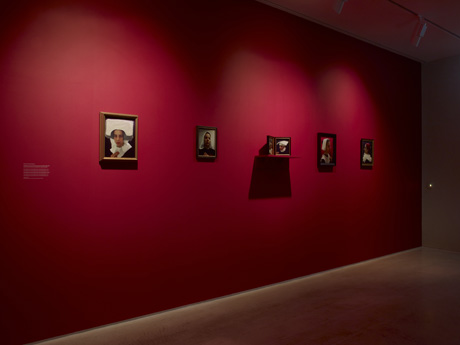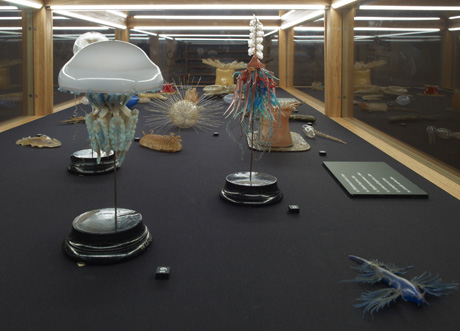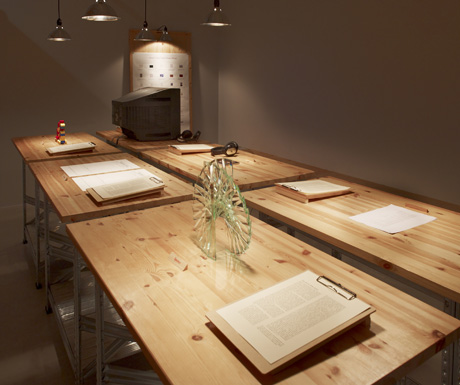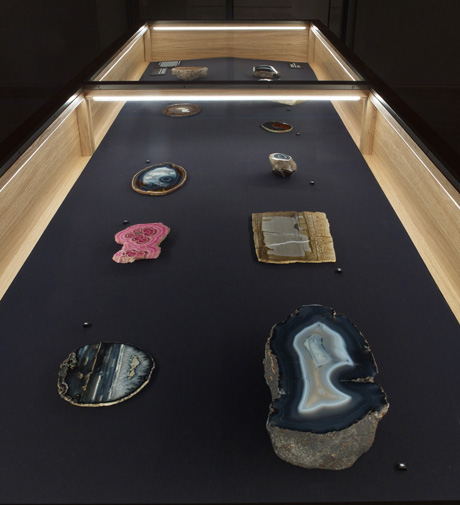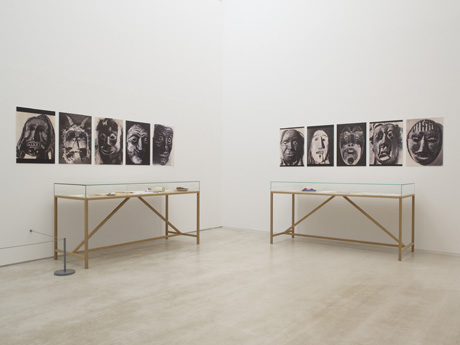Dates: 24 May–15 September 2013, 10 am–6 pm
Location: Turner Contemporary, Margate, UK
FREE

“Curiosity: Art and the Pleasures of Knowing” is an exhibition that moves wittily, sometimes mysteriously, between contemporary art, anatomy, Old Master drawings, the history of criminology, Cold War secrets, the origins of museums, and voyeurism in everyday life. Taking as a starting point the cabinets of curiosities that flourished throughout Europe in the seventeenth century, “Curiosity” is a detailed meditation on the nature of wonder, fascination, and inquiry. Renowned architect David Chipperfield conceived the design for the Turner Contemporary installment of the exhibition, which is set to tour to Norwich Castle Museum & Art Gallery and De Appel, Amsterdam.
Like its ancestor the Wunderkammer, this exhibition happily juxtaposes past and present to create a picture of knowledge and invention that is encyclopedic but highly eccentric. Attention and concentration are recurrent themes of the exhibition: contemporary works include Nina Katchadourian’s sly photographs made on long-haul flights using materials to hand, including lavatory supplies and in-flight magazines and meals; Matt Mullican’s videos of himself under hypnosis becoming deeply interested in his own shoe and other objects; and Tacita Dean’s film of the artist Claes Oldenburg in his studio as he cleans the objects on his bookshelves. Katie Paterson invites us to pore over identical images of darkness sourced from observatories all around the world, and prepares a fragment of meteorite that will be taken into orbit by the European Space Agency in 2014, while Gerard Byrne films and photographs the territory around Loch Ness, producing a compelling map of the frontiers between art, science, and fantasy.
Visitors will encounter recent works such as these among an intriguing array of historical artifacts. The German glassmakers Leopold and Rudolph Blaschka did not call themselves artists, but in the late nineteenth century they produced an astonishing series of exquisitely detailed models of aquatic creatures: still used as teaching aids, they hover somewhere between works of art and scientific specimens. But curiosity has a less alluring history too. The Center for Land Use Interpretation, a scholarly-artistic institute based in Los Angeles, will exhibit a series of Rolodexes and index cards that once belonged to the US nuclear facility at Los Alamos: bearing the names and addresses of contractors hired by the government, they attest to an era of intense military-industrial secrecy. Curiosity can also coax us into seeing things that are not exactly there: a collection of ravishingly patterned and colored stones that belonged to the renegade surrealist writer Roger Caillois is part of the long tradition of artists projecting their visions onto the natural world.
Curiosity is a venerable subject that has long been a theme for artists as much as scientists, philosophers, and writers. This exhibition includes three examples of Leonardo da Vinci’s drawings of emblems, puzzles, and curious objects; Albrecht Dürer’s celebrated 1515 woodcut of a rhinoceros; and Nicolaes Maes’s Eavesdropper, his 1655 painting of a scene of domestic spying. But curiosity is also a compelling topic today, especially in the era of the Internet when there has never been so much knowledge available and we have never been so easily distracted.
“Curiosity is the desire to uncover what lies beyond our present understanding of the world,” said curator Brian Dillon. “Alongside wonder, which was traditionally considered the origin of philosophy, curiosity is valued because it leads us into new territories. But historically it has been condemned too as a form of distraction, an attraction to novelty for its own sake or a desire to unveil what is actually none of our business. Like the cabinet of curiosities, which mixed science and art, ancient and modern, reality and fiction, this exhibition refuses to choose between knowledge and pleasure. It juxtaposes historical periods and categories of objects to produce an eccentric map of curiosity in its many senses.”
An exploration of the ambiguous history and present meaning of wonder, attention, and the urge to know, “Curiosity” shuttles engagingly between rigor and intuition, and asks us to focus on objects, images, and ideas at vastly different scales: from the microscopic through the bodily to the cosmic and infinite.
“Curiosity: Art and the Pleasures of Knowing”—accompanied by a catalogue that includes essays by Dillon and Marina Warner—includes work by Agency, Salvatore Arancio, Anna Atkins, Rudolph and Leopold Blaschka, Corinne May Botz, Pablo Bronstein, Adam Broomberg and Oliver Chanarin, Charles Le Brun, Gerard Byrne, Nina Canell, the Center for Land Use Interpretation, Tacita Dean, Albrecht Dürer, Jimmie Durham, Gunda Förster, Aurélien Froment, Philip Henry Gosse, Laurent Grasso, Thomas Grünfeld, Susan Hiller, Toril Johannessen, Nina Katchadourian, Elad Lassry, Leonardo da Vinci, Nicolaes Maes, Jeremy Millar, Matt Mullican, Jean Painlevé, Katie Paterson, Francis Place, Aura Satz, Miroslav Tíchy, J. M. W. Turner, and Richard Wentworth. Historical artifacts include a scrying mirror and crystal reputed to have belonged to John Dee; ivory anatomical models from the seventeenth and eighteenth centuries; Robert Hooke’s Micrographia with its startlingly detailed illustration of a flea; the Horniman Museum’s celebrated overstuffed walrus; and a penguin collected by Ernest Shackleton’s Antarctic expedition.
Listings information:
“Curiosity: Art and the Pleasures of Knowing,” a Hayward Touring exhibition from Southbank Centre, is on view until 15 September 2013 at Turner Contemporary, Margate.
De Appel, Amsterdam
June–August 2014
For further press information, please contact Holly Blaxill at holly.blaxill@southbankcentre.co.uk or +44 (0)20 7921 0672.
See press about “Curiosity: Art and the Pleasures of Knowing” in The Telegraph, The Guardian, The Independent, Financial Times, Blouin ArtInfo, Artforum, Apollo, Disegno, and The Chronicle of Higher Education.

